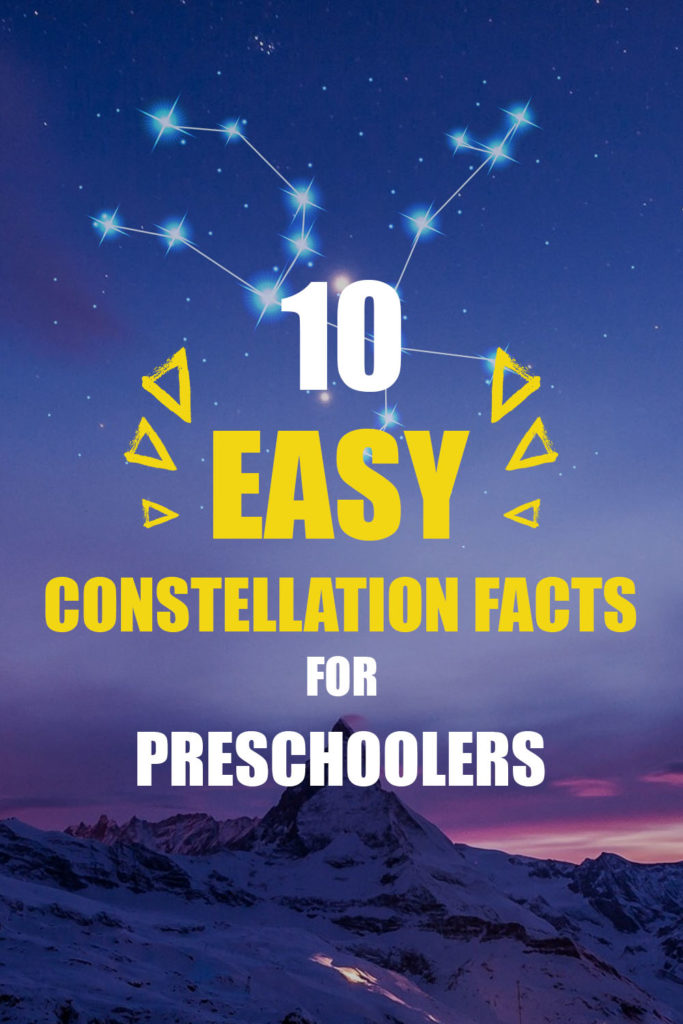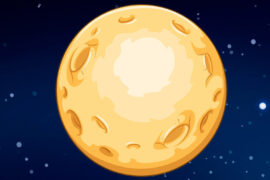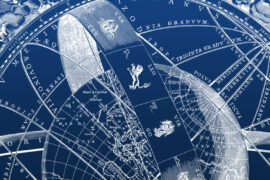It is very common for children to get interested in space at a very early age. They are learning everything about the world around them so imagine how intriguing it is for them to look up at the sky and see these hundreds of shiny dots up there and wonder what they are.
Explaining space to someone that young can be tricky because as adults we can take for granted knowledge they don’t have yet and we can end up confusing them.
That doesn’t mean you should skip the subject. All you need to do is explain things in a way they can understand.
This is, as a matter of fact, a perfect age to get them interested in science as they have zero prejudices about it.
Here are 10 facts about constellations that should be easy to learn for them. You can scroll down and find a detailed explanation for each one of them below.
- There are 88 constellations in the sky
- The largest constellation is ‘Hydra’
- The Greeks were the first to name the constellations
- The smallest constellation is ‘Crux’
- Constellations change positions throughout the year
- 42 constellations are named after animals
- There is one star that doesn’t move in the sky
- People used the constellations to navigate in ancient times
- The easiest constellation to find is Orion
- The constellations move from East to West
In this guide, we will give you a list of cool, but easy to understand facts you can tell them. But first, you might need a way to provide them with some definitions.
What is a star
Here’s how you can explain stars to preschooler:
A star is a giant, bright ball of gas that is burning very far away from us. The Sun is a star, so all of those light you see at night are like suns that are farther away.
If any follow-up questions come up, like “why are they burning?”, you can just say it is because they have a lot of gas in them.
What is a constellation
Now that we know what a star is, we can explain constellations:
A constellation is a family of stars that live close to each other. When you connect them as if they were dots on a coloring book, they can look like animals, people or other things.
“What animals do they look like?”
Well, there are bears, a bull, a lion, a snake, and fishes, among others.
Constellation Facts

1. There are 88 constellations
Our modern list of constellations has been established by The International Astronomical Union, an organization of scientists that seek to promote astronomy.
In this list, 88 constellations are currently recognized. You can find the complete list and some details about all of them in this wikipedia article.
2. The largest constellation is ‘Hydra’
Hydra is named after the mythological giant snake. It extends a long way across the sky and covers the most area out of any other constellations in the sky.
Unfortunately, Hydra is only visible on certain parts on Earth. In North America. it can only be seen from Alaska and Northern Canada. In Europe, it can only be seen in some Scandinavian countries like Finland and Sweden.
3. The Greeks were the ones to name the constellations
Even though they were not the first ones to use the stars for navigation and agriculture, ancient Greek astronomers were the first to name them.
Greeks also created fantastic and mythological stories about every one of the constellations. These stories usually included heroes and gods.
Because of Greece’s location, their list of constellations only included 48 instead of the 88 we know today. That is because some constellations are only seen in certain regions of the planet.
4. The smallest constellation is ‘Crux’
We don’t know who named this one but they definitely didn’t think too much about it. The constellation Crux, meaning “the cross” is only made of 4 stars in the shape of, well…a cross.
Due to its position in the sky, Crux is mostly visible on Earth’s southern hemisphere. In the U.S. it is only visible for short periods of time and only in southern states like Texas.
5. Constellations change positions throughout the year
Earth rotates around the Sun as the year goes by. That means our position in space is constantly changing and exactly as it would happen inside a moving car, the view from the window changes as you advance.
Some constellations then are only visible for some portions of the year and different ones take its place. The following year the cycle repeats and the constellations become visible again.
6. 42 constellations are named after animals
Out of the 88 constellations, almost half of them represent animals. Here’s the complete list and what each of them means.
| Constellation | Animal it is based on |
| Apus | Bird |
| Aquila | Eagle |
| Aries | Ram |
| Camelopardus | Giraffe |
| Cancer | Crab |
| Canes Venatici | Hunting dogs |
| Canis Major | Big dog |
| Canis Minor | Little dog |
| Capricornus | Sea goat |
| Cetus | Sea monster (whale) |
| Chamaeleon | Chameleon |
| Columba | Dove |
| Corvus | Crow |
| Cygnus | Swan |
| Delphinus | Porpoise |
| Dorado | Swordfish |
| Draco | Dragon |
| Equuleus | Little horse |
| Grus | Crane |
| Hydra | Sea serpent |
| Hydrus | Water snake |
| Lacerta | Lizard |
| Leo | Lion |
| Leo Minor | Little lion |
| Lepus | Hare |
| Lupus | Wolf |
| Lynx | Lynx |
| Monoceros | Unicorn |
| Musca | Fly |
| Pavo | Peacock |
| Pegasus | Pegasus, the winged horse |
| Phoenix | Phoenix |
| Pisces | Fishes |
| Piscis Austrinis | Southern fish |
| Scorpius | Scorpion |
| Serpens | Serpent |
| Taurus | Bull |
| Tucana | Toucan |
| Ursa Major | Big bear |
| Ursa Minor | Little bear |
| Volans | Flying fish |
| Vulpecula | Fox |
7. There is one star that doesn’t move in the sky
While all the stars are constantly changing positions in the sky, there is one that stays almost still all the time.
This star is named Polaris, but it is also known as the North Star. It is part of the “little bear” constellation (Ursa Minor).
This curious thing happens because the North Star is almost perfectly aligned with Earth’s axis.
8. People used the Constellations to navigate in ancient times
When people didn’t have phones or any other way to find out where they were going at night, they used the stars and constellations when they were traveling. This was possible because if you know the patterns of the constellation, you could tell in what direction they could be found.
Some people also used them to recognize agricultural seasons.
9. The easiest constellation to find is ‘Orion’
The Orion constellation is named after the story of a famous hunter in Greek stories.
In the U.S., the rest of North America and Europe, it is probably the easiest constellation to find in the sky. All you need to do is find three stars that are very close to each other and form a line. That is called “Orion’s belt” and is in the middle of the constellation.
10. The constellations move from East to West
Just like the Sun, and the Moon, the constellations move from East to West throughout the night. This is due to the direction the Earth rotates around the Sun.







